Easy Pie Crust Recipe Without a Food Processor
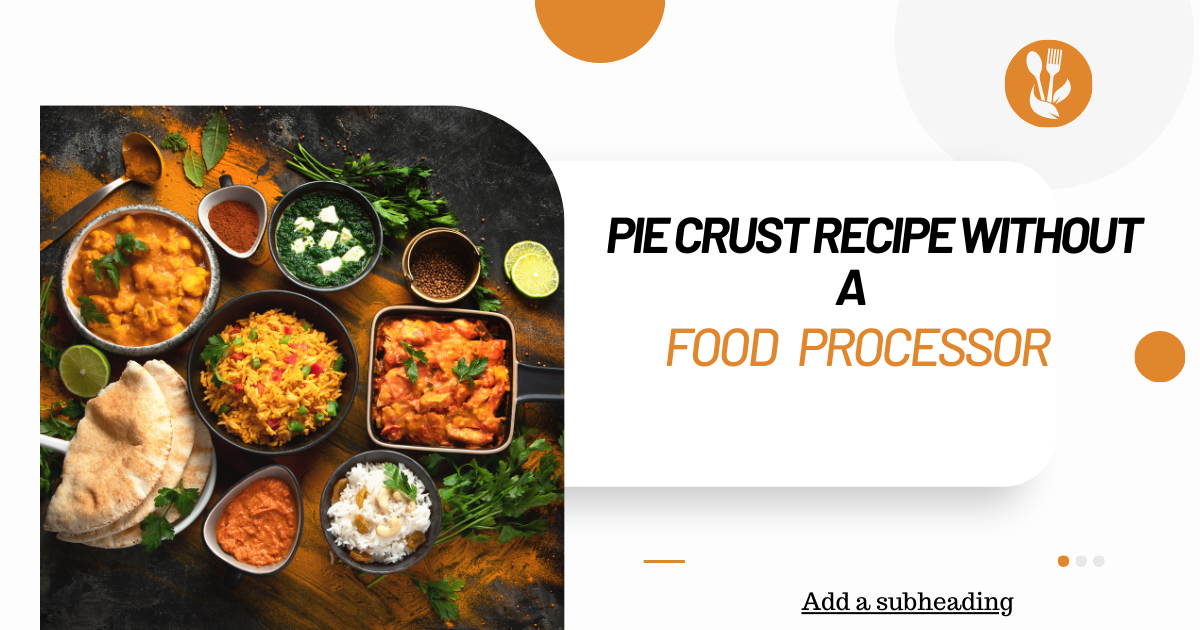
Are you passionate about baking and love the taste of a homemade pie crust, but don’t have a food processor at your disposal? Don’t worry, we’ve got you covered. This guide will take you through an easy pie crust recipe without a food processor, using simple tools and ingredients that you likely have in your kitchen already.
Creating a pie crust recipe without a food processor might seem intimidating at first, particularly if you’re used to relying on kitchen appliances for most of your baking. But, there’s no need to fret. This traditional method of pastry making is not only possible but can also be wonderfully satisfying.
You’ll discover that crafting a butter pie crust recipe without a food processor can be quite therapeutic and gives a sense of achievement that’s difficult to surpass. So, if you’re all set to get your hands in the dough and explore the realm of homemade pie dough without a food processor, let’s dive right in.
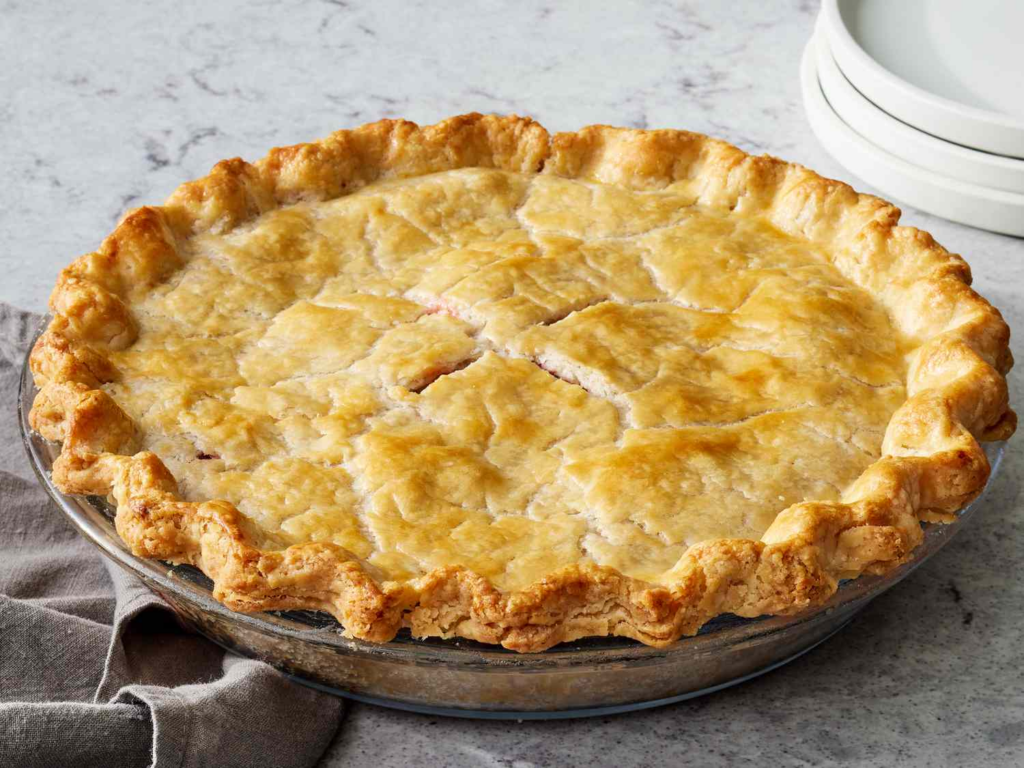
Table of Contents
Ingredients for Pie Crust Recipe Without a Food Processor
The ingredients for this easy pie crust recipe without a food processor are quite straightforward and likely already in your pantry. Here’s what you’ll need:
- All-purpose Flour: The base of your pie crust. This recipe calls for 2 1/2 cups of it.
- Cold Butter: The key to a flaky crust. You’ll need 1 cup of unsalted butter, cut into cubes. Remember, it’s crucial to use cold butter when making pie crust by hand.
- Granulated Sugar: Just a bit for a subtle sweetness. We’ll use 1 tablespoon.
- Salt: To balance out the sweetness and enhance the overall flavor. A half teaspoon will do.
- Ice Water: This helps bring the dough together. Have about 1/2 cup ready, but remember to add it gradually.

Now that you have your ingredients ready, you’re all set to delve into the world of traditional pastry making and create your butter pie crust recipe with no food processor. Let’s move on to the step-by-step instructions.
Pie Crust Recipe Without a Food Processor
Adding the Butter Cubes
Kick-starting our pie crust recipe without a food processor, you’ll begin by introducing the cold butter cubes to your all-purpose flour. Remember, the butter needs to be cold to ensure your crust turns out flaky and delectable.
Ensure all the butter cubes are coated in flour before proceeding to the next step, as it makes the process smoother.

Beginning to Squash the Butter
Once all your butter cubes are coated in flour, it’s time to start squashing. You might find this method a tad unusual for a pie crust recipe without a food processor, but it’s a classic technique in traditional pastry making that results in a superior crust. Apply firm pressure to flatten the butter cubes into the flour.
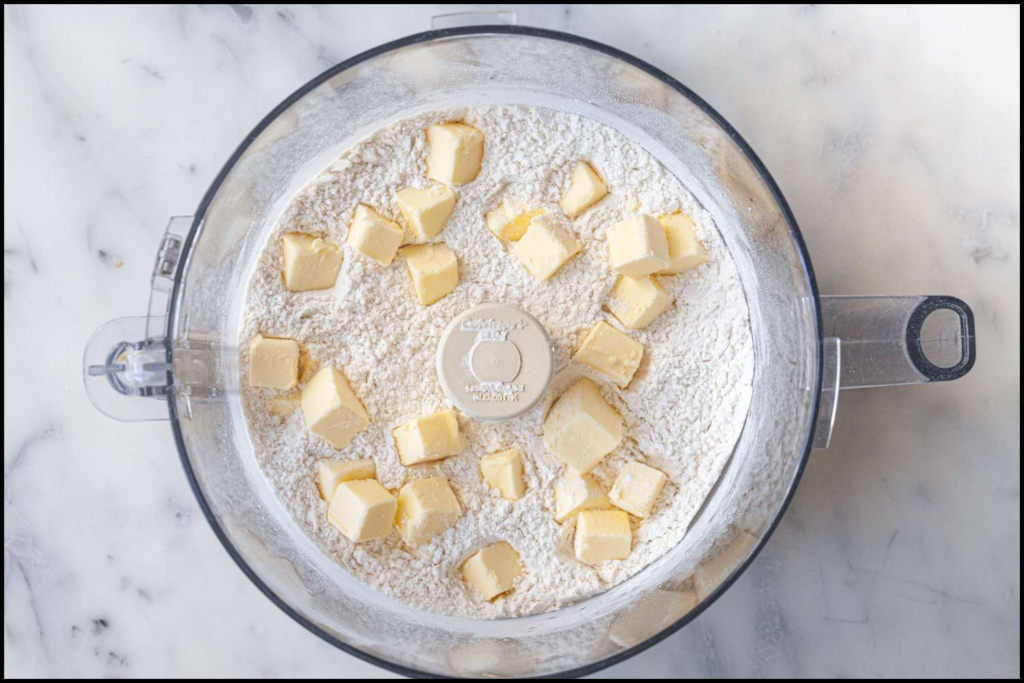
Squashing the Butter into Small Flat Pieces
Persist in squashing the butter until you have a blend of small flat pieces and pea-sized bits. This texture variation will contribute to the flakiness of your final pie crust. Remember not to overdo it—you want to keep the butter as cold as possible to prevent it from melting into the dough too early.
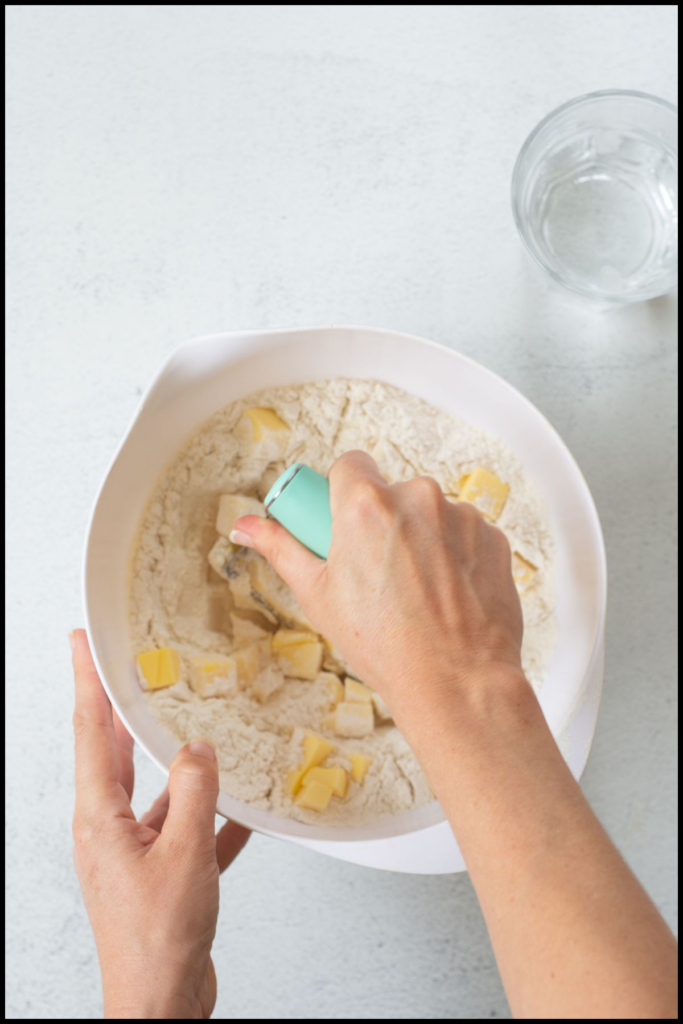
Adding Ice Water to the Pie Crust
Now, you’ll bring your dough to life by gradually adding ice water. Start with half of the water, mixing it into your dough with a fork. If it seems too dry, add more water, one tablespoon at a time, until the dough holds together when you squeeze it in your palm.

Patting the Dough into a Disc
After your pie dough without a food processor has formed, transfer it onto a lightly floured surface. Shape it into a flat disc using your hands. This shape will make it easier to roll out later. Wrap your dough disc in plastic wrap and let it rest in the refrigerator for at least one hour before proceeding to the rolling stage.
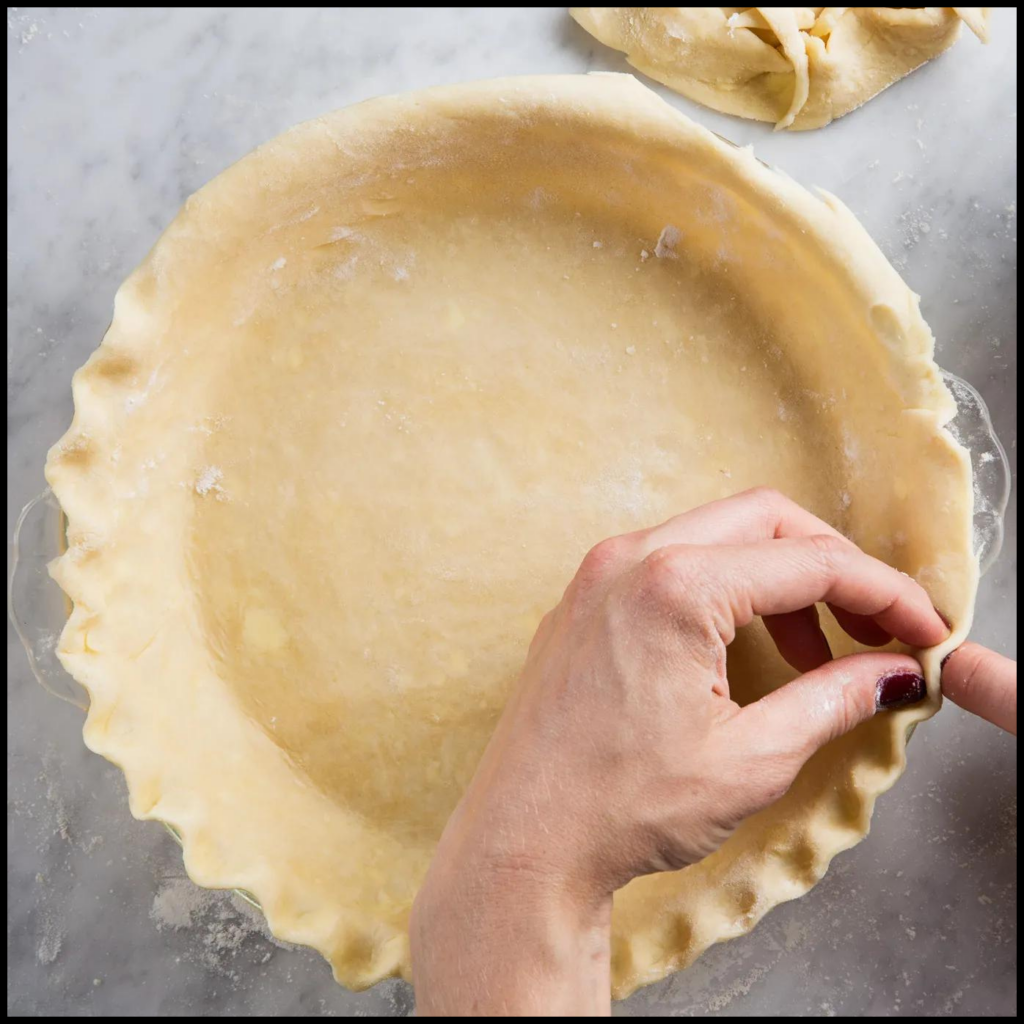
To Par or Blind Bake
Once your dough has had its rest, you’re prepared to roll it out and fit it into your pie dish. If you’re following a recipe that calls for a pre-baked or “blind-baked” crust, now’s the time to par-bake your crust. This involves partially baking the crust before adding the filling, which prevents a soggy bottom. If your recipe doesn’t call for this, you can simply add your filling to the crust and bake as per your pie recipe’s guidelines.
How large should the pie crust be rolled out?
When following this pie crust recipe without a food processor, the size you roll out your pie crust largely depends on the size of your pie dish. Normally, the aim is to roll the dough out to a diameter approximately 2 inches greater than your pie dish’s size. So, if you’re using a standard 9-inch pie dish, you should roll your dough out to reach around 11 inches in diameter.
This provides sufficient dough to coat the dish’s base and sides, with a little extra for shaping the borders as per your preference. In traditional pastry making, the thickness of the dough is also important. Aim for about 1/8 inch thickness – this ensures your pie crust is sturdy enough to hold the filling but still flaky and tender to the bite.
Remember, the key to a good pie crust recipe without a food processor is patience and practice! It might take a few tries to roll out the perfect crust but rest assured, the delicious end result is worth the effort.
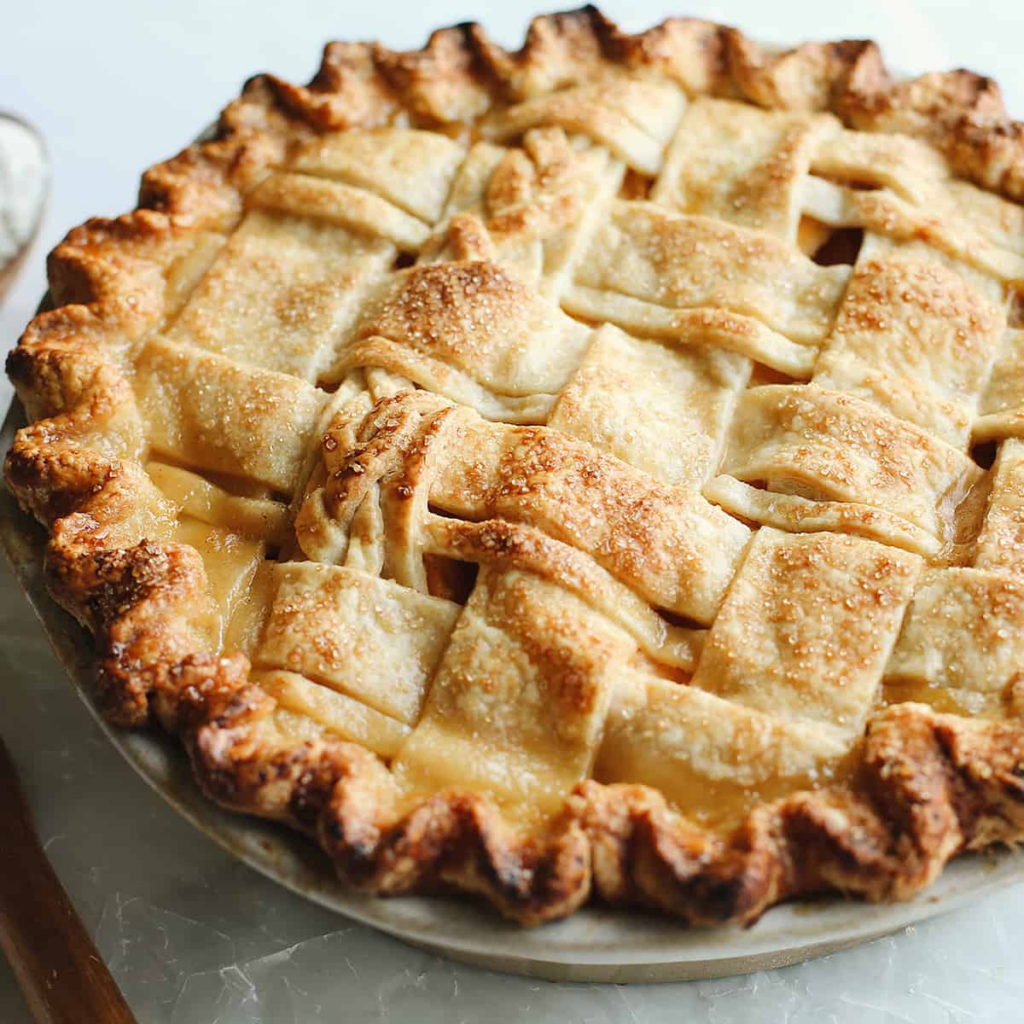
Rolling Method: Turning and Inverting for Uniform Thickness
When it comes to rolling your pie dough without a food processor, technique matters. To achieve an even thickness throughout your crust, employ the rotating and flipping method. Here’s how to do it:
Start by lightly flouring your work surface. Place your chilled dough disc in the center. Apply gentle, even pressure with your rolling pin from the center of the dough outwards. Following each roll, give your dough a one-quarter spin. This rotation ensures that you’re not just elongating one side of the dough and helps maintain a circular shape, essential for a pie crust recipe without a food processor.
Next, flip your dough occasionally. This step might seem unnecessary, but it’s a game-changer. It prevents the dough from sticking to your work surface.
Ensure you dust the surface anew before turning over the dough.
Remember, the goal is to achieve a rolled-out dough that’s about 1/8-inch thick. This thickness ensures your crust can support the filling without becoming too thick or doughy. With practice, this pie crust recipe without a food processor and the rolling technique will become second nature. Happy baking!
Conclusion
Mastering the art of creating an easy pie crust recipe without a food processor is a rewarding achievement for any baking enthusiast. This traditional method may seem a bit more labor-intensive compared to using modern kitchen appliances, but the result is a delicious, flaky pie crust with a richness and texture that’s hard to match. Plus, knowing you’ve made it by hand adds a special touch to any pie you bake.
The process of making a pie crust recipe without a food processor is as much about the technique as it is about the ingredients. It’s important to be patient and mindful during each step, from incorporating the cold butter to rolling out the dough with the rotating and flipping technique. Remember, baking is a science, but it’s also an art form. It’s okay if your first few attempts don’t end up picture-perfect. The key is to keep practicing and learning from each experience.
And let’s not forget the amazing sense of accomplishment that comes from successfully making your pie crust by hand. It’s a testament to your skills and patience as a baker. So, keep that rolling pin moving and those butter cubes cold. With every pie crust you make, you’ll be honing your skills and getting closer to perfecting this butter pie crust recipe with no food processor. Happy baking, and here’s to many delicious pies in your future!
Frequently Asked Questions
Why Cold Butter for Pie Crust?
Using cold butter is a key element in making a pie crust recipe without a food processor. When cold butter is mixed with flour, it doesn’t fully blend with it. Instead, it creates small pockets of butter within the dough.
As the crust bakes, these pockets melt, producing steam that lifts the dough, thus creating that desirable flaky texture in your pie crust. If your butter is too warm, it will blend too much with the flour and won’t create these pockets, resulting in a less flaky and more dense crust.
What should one avoid when making a pie crust?
When making a pie crust by hand, there are a few common mistakes to avoid. Initially, be cautious not to excessively knead the dough. This can activate the gluten in the flour, making your crust tough rather than flaky. Second, be careful not to add too much water.
While it may seem to make the dough easier to handle, it can also lead to a tough pie crust. Lastly, avoid using warm butter or shortening. As mentioned earlier, cold fat is essential for a flaky pie crust.
Why is Pie Crust So Difficult?
Pie crust can be seen as difficult because it requires a delicate balance. The ingredients are simple, but the technique for combining them can be tricky, especially when making a pie crust recipe without a food processor. Temperature plays a crucial role, as does the amount of water added.
Additionally, the method of mixing and rolling out the dough can greatly affect the texture of the crust. However, with patience and practice, you can master the process.
How Long Does It Take to Make Pie Crust By Hand Compared to Using a Food Processor?
Making a pie crust by hand can take a bit longer than using a food processor. On average, you should allocate about 15-20 minutes to prepare the dough by hand. This accounts for the time needed to incorporate the butter and to combine the dough. A food processor can cut this time down to about 5-10 minutes. However, remember that both methods require the dough to rest and chill in the refrigerator for at least an hour before rolling it out.
Are There Any Specific Techniques for Incorporating Butter into the Pie Dough Without a Food Processor?
Yes, there are specific techniques for incorporating butter when making a pie crust recipe without a food processor. The most common method is by using your fingers or a pastry cutter to “cut” the butter into the flour. This involves pressing the butter into small, flat pieces, ensuring they are coated in flour.
This process can take some time, but it’s vital for creating a flaky crust. Another technique is grating frozen butter into the flour, which can be faster and results in an evenly distributed fat.
Editor’s Choice :
Leave a Reply
You must be logged in to post a comment.